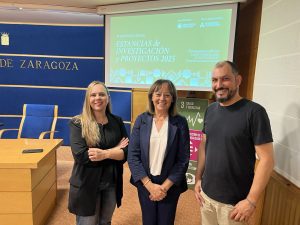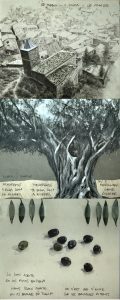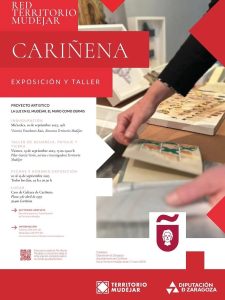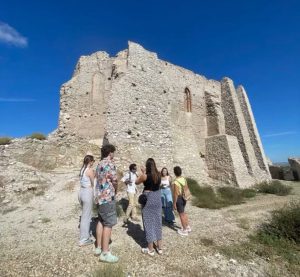


The European MOMAr (Models of Management for Singular Rural Heritage) project, led by the Provincial Council of Zaragoza and in which Territorio Mudéjar participates, has brought together 28 heritage experts, including a delegation from Zaragoza, on a study visit to the province of Groningen (Netherlands). The goal is to exchange best practices and learn about Dutch management models firsthand.
The visit took place on April 27 and 28 and was attended by the Zaragoza Provincial Council, including Juan José Borque, coordinator of the Citizenship Department, and Mª Carmen Gracia, head of the Culture Service; Victoria Trasobares, director of Territorio Mudéjar; three of the mayors who belong to the association: Maria Rosario Lázaro, mayor of Villarreal de Huerva; Marta Gracia Blanco, mayor of Almunia de Doña Godina; and Alfonso Puertas, mayor of Torralba de Ribota; and Julio Zaldívar, manager of the Tarazona Monumental Foundation.
MOMAr’s European partners from Mehedinti County (Romania), the Saxony-Anhalt region (Germany), South Bohemia (Czech Republic), the Dutch hosts, and the project’s technical advisory committee, formed by Irene Ruiz and Marisa Sebastián, also participated.
This study visit is the third of a total of four, which seek to exchange knowledge on asset management models among European experts, all from rural areas. The ultimate goal is to import best practices and, with them, develop an Action Plan in which each region will develop new proposals for improving local projects.
The rehabilitation of historical heritage, giving it new social and educational uses for the benefit of local communities, through cooperation between public administrations and private properties, marked the practical visits on this trip.
The first stop on the tour was Maarhuizen, an architectural complex located atop an artificial mound, remnant of what was once a farming village centuries ago. Today, one of its former farms is being reconstructed as part of a holistic project seeking to create a cultural and natural meeting point, involving educational centers in the rehabilitation process.
We visited one of the churches of the Groningen Historic Church Foundation. This organization manages nearly 100 churches, most of them medieval and privately owned. In these churches, religious space has become a community space, open to the public and serving social purposes. Proof of this is the exhibition “Festivity! In the East and in the West,” located in a restored medieval tower and exploring celebrations of different religions (Catholic, Jewish, and Muslim). Through an interactive experience, the exhibition seeks to create common ground between different faiths and open up a non-judgmental intercultural dialogue among its visitors.
The expedition also approached the Wadden Sea, the largest intertidal flat system in the world, listed by UNESCO as a World Heritage Site for its unique geological and ecological values and high biological diversity.
The rural region of Oldamst, located near the German border, was the focus of experts’ attention during the second day of work. This area was considered the breadbasket of Holland decades ago thanks to its fertile land. However, depopulation and the loss of local agriculture have left hundreds of farms abandoned or in serious danger of collapse. Adding to this process of degradation are earthquakes, largely caused by gas extraction, and soil oxidation, which causes significant subsidence. Thus, an enormous historical heritage, in private hands, faces the costly challenge of reconstruction and rehabilitation, but they are not doing it alone, as public administrations are contributing financially and strategically to the preservation of these centuries-old buildings.



